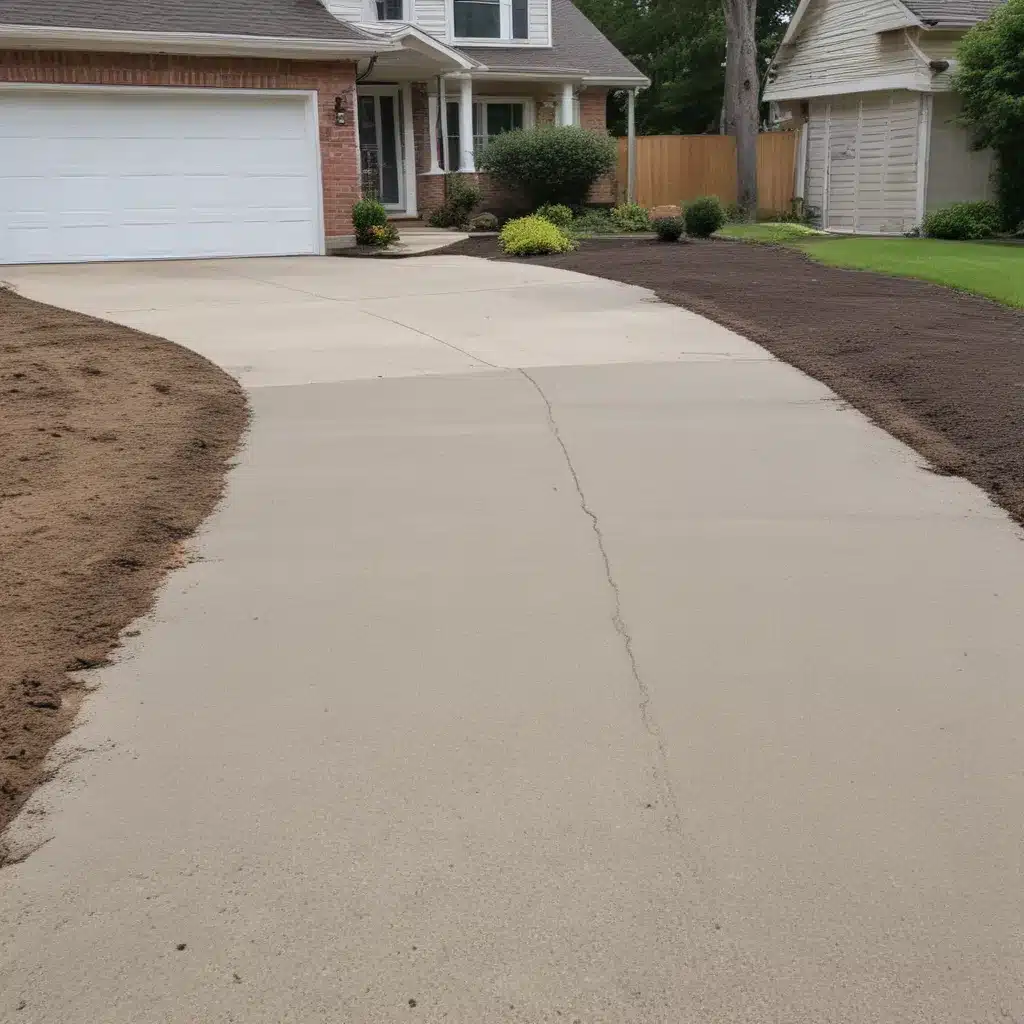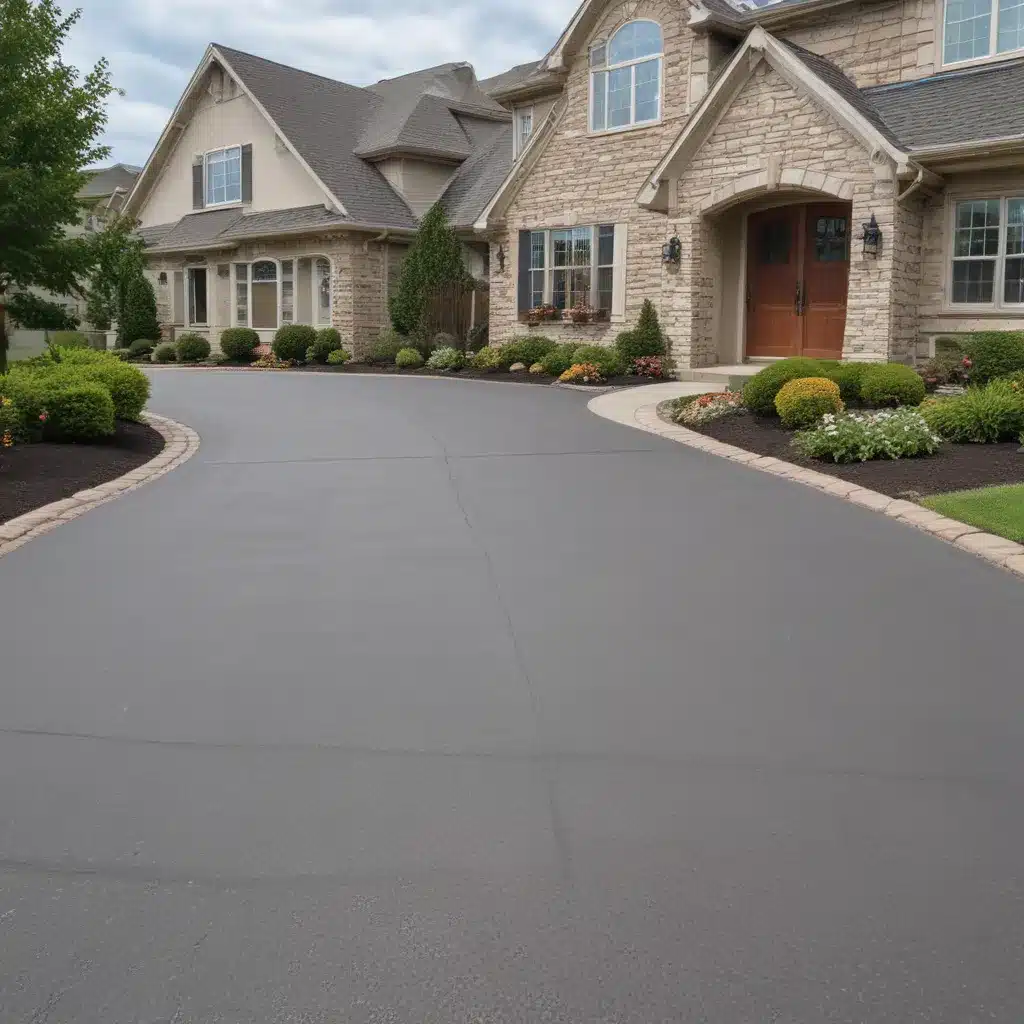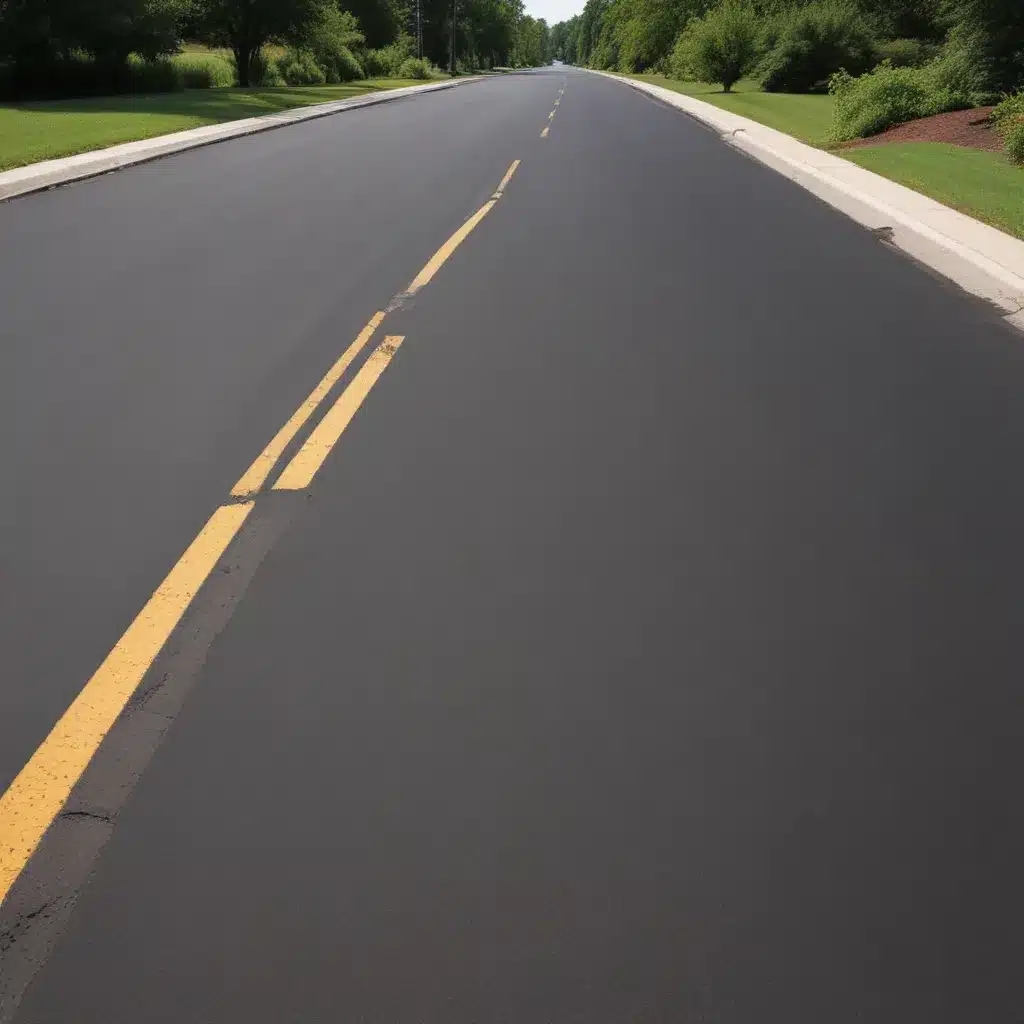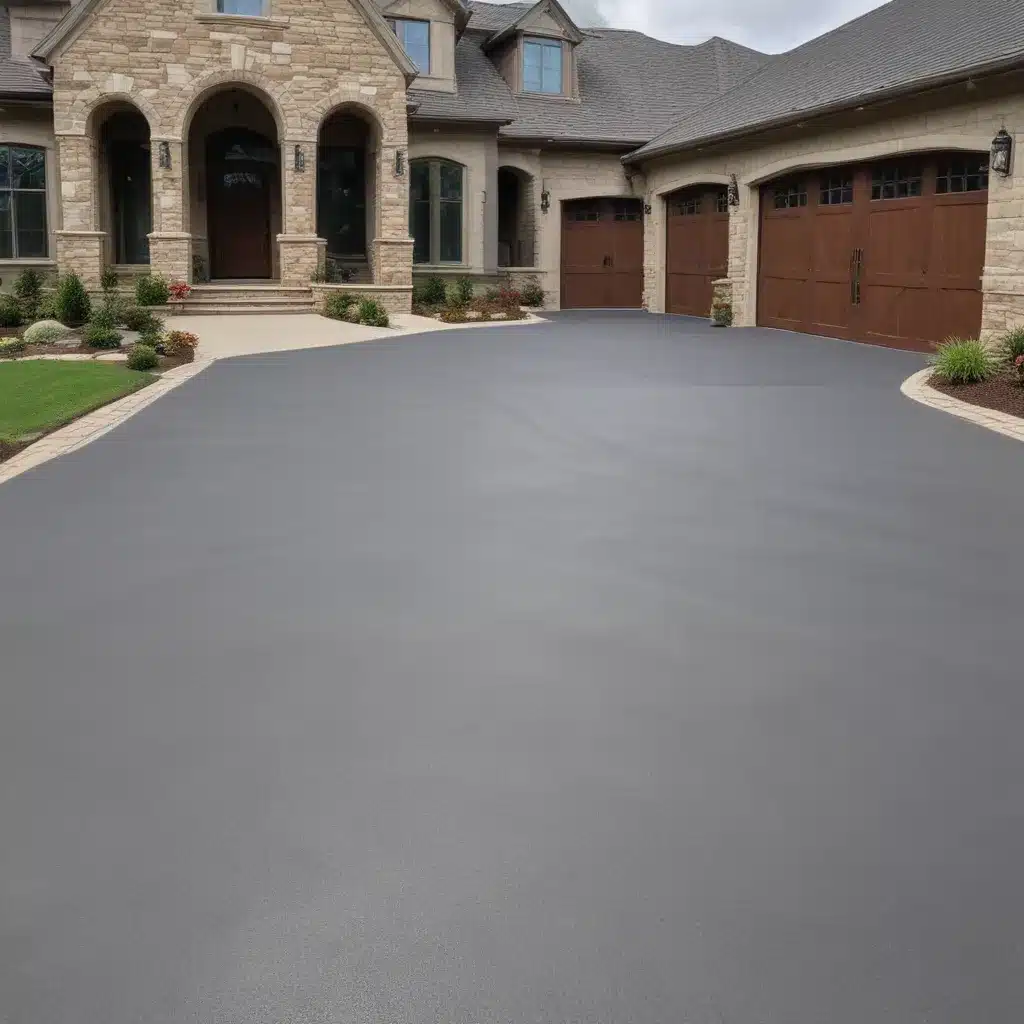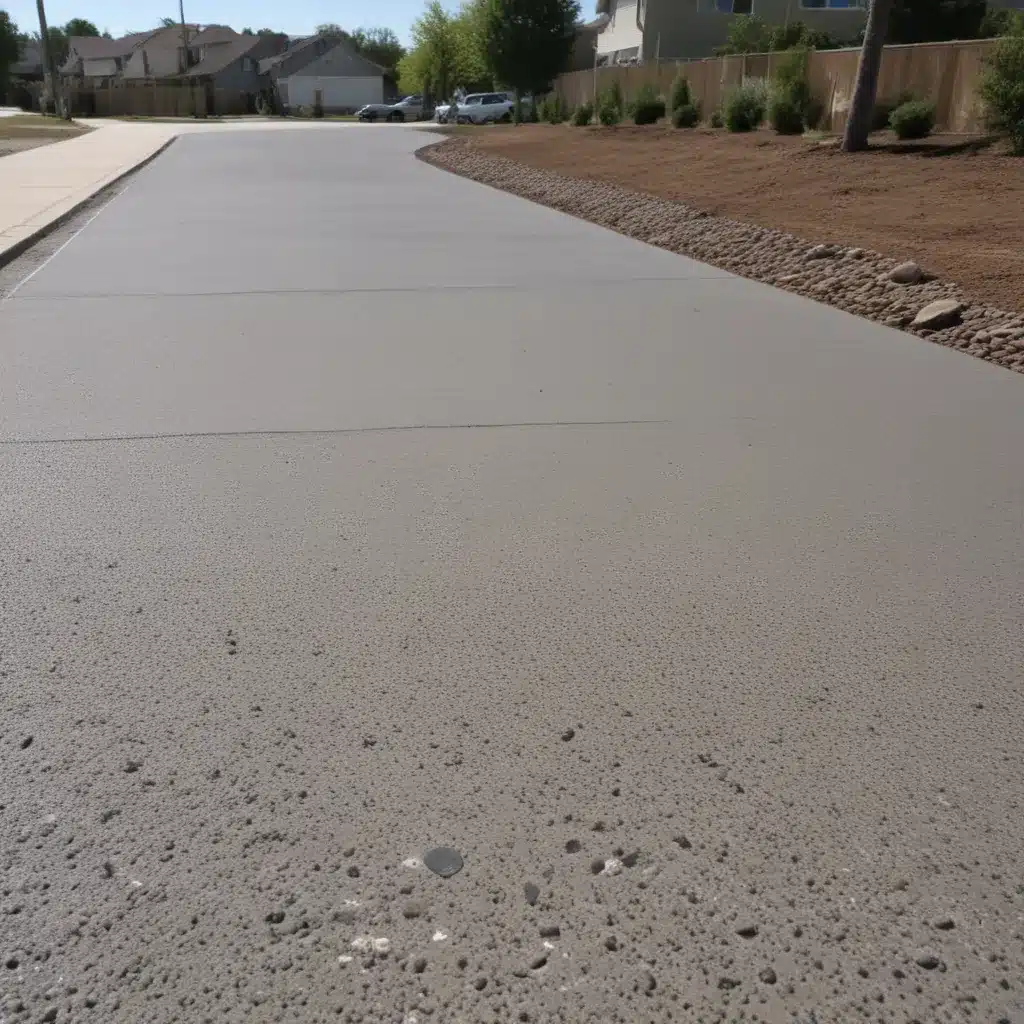Navigating the Potholes of Driveway Maintenance
Ah, the joys of homeownership – where landscaping, roof repairs, and driveway upkeep take on a whole new meaning. Let me tell you, I’ve had my fair share of driveway woes over the years. Remember that time I backed the family minivan into a hidden pothole and ended up with a flat tire and a slightly bruised ego? Or how about the winter when the freeze-thaw cycle turned my driveway into an ice rink, complete with hazardous ridges and crevices? Yeah, those were real fun times.
But you know what they say – when life gives you lemons, you make lemonade. Or in this case, when life gives you a worn, uneven driveway surface, you find a way to smooth it out and restore its former glory. And that’s exactly what I’m here to help you do today.
Diagnosing the Problem: What’s Causing Those Unsightly Ruts?
Before we dive into the solutions, it’s important to understand what’s actually causing those pesky ruts and divots in your driveway. The culprits can be varied, ranging from heavy vehicle traffic and weathering to poor initial construction and lack of maintenance. Let’s take a closer look at the most common culprits:
Heavy Vehicle Traffic
If you have a long driveway that sees a lot of daily use – whether it’s your own comings and goings or the parade of delivery trucks, guests, and family members – the weight and repeated passes can gradually take a toll on the surface. Over time, those tires compact and displace the material, creating depressed areas and ruts.
Weathering and Erosion
Mother Nature can also be a formidable foe when it comes to driveway maintenance. Exposure to the elements, like heavy rain, freeze-thaw cycles, and intense sunlight, can gradually break down and erode the driveway surface. This can lead to cracks, crumbling, and the formation of unsightly ruts.
Poor Construction
Sometimes, the root of the problem lies in the initial construction of the driveway. If the base wasn’t properly prepared or compacted, or if the wrong materials were used, it can result in an unstable surface that’s prone to deformation and rut formation over time.
Lack of Maintenance
Finally, we can’t forget the role that regular upkeep and maintenance (or the lack thereof) play in the longevity of a driveway. Neglecting simple tasks like filling cracks, resurfacing, or sealcoating can accelerate the deterioration of the driveway, leading to those unsightly ruts and potholes.
Smoothing the Way: Strategies for Resurfacing and Repairing
Okay, now that we’ve identified the common culprits behind those pesky driveway ruts, let’s talk about how to fix them. There are a few different approaches you can take, depending on the severity of the issue and your budget. Let’s explore some of the most effective options:
Patching and Filling
For minor ruts and depressions, a simple patching and filling solution might be all you need. This involves using a driveway patch or filler material to level out the affected areas and create a smooth, even surface. It’s a relatively quick and inexpensive fix, but it’s important to ensure proper preparation and application for best results.
Resurfacing
If the damage is a bit more extensive, a full resurfacing might be in order. This involves removing the top layer of the driveway and applying a fresh, new surface material. Depending on the condition of your existing driveway, you might opt for an asphalt overlay, a concrete resurfacing, or even a permeable paving solution. Each option has its own pros and cons in terms of cost, durability, and aesthetic appeal.
Reconstruction
In some cases, the damage to the driveway might be so severe that a complete reconstruction is the only viable solution. This involves tearing up the entire existing driveway and starting from scratch, with proper base preparation and the installation of a new surface. While it’s the most disruptive and expensive option, a well-executed reconstruction can breathe new life into a hopelessly worn-out driveway.
Maintaining the Magic: Proactive Steps for a Long-Lasting Driveway
Now that we’ve covered the repair and resurfacing options, let’s talk about something even more important: preventative maintenance. After all, the best way to avoid those pesky driveway ruts is to keep them from forming in the first place, right? Here are some tips to help you stay ahead of the curve:
Regular Inspections and Patching
Make it a habit to regularly inspect your driveway for any signs of cracking, settling, or other damage. When you spot an issue, address it right away with a quick patch or filler. Nipping problems in the bud can go a long way in preserving the integrity of your driveway.
Sealcoating and Resurfacing
Depending on the material, your driveway may benefit from periodic sealcoating or resurfacing. This helps protect the surface from the elements and maintain a smooth, even appearance. Be sure to follow the manufacturer’s recommendations for frequency and application.
Strategic Landscaping
Believe it or not, the plants and trees around your driveway can also play a role in its longevity. Make sure to keep vegetation trimmed back and prevent any roots from encroaching on the surface. Proper drainage and grading can also help mitigate the effects of water and erosion.
Winter Maintenance
For those of us living in colder climates, winter can be especially tough on driveways. Make sure to clear snow and ice promptly, and consider using a deicer product that’s gentle on the surface. Avoiding heavy loads and sharp shovels can also help prevent cracking and chipping.
Putting It All Together: A Real-Life Driveway Transformation
Now, I know all of this talk about driveway maintenance and repair might sound a bit dry and technical, but let me tell you, the results can be truly transformative. Take the case of my neighbor, Janine – her driveway was in rough shape, with deep ruts and unsightly divots that made navigating her property a real challenge.
Janine decided to bite the bullet and go for a full driveway reconstruction. I’ll never forget the day the crew showed up and got to work, tearing up the old surface and laying a brand-new, meticulously compacted base. The transformation was nothing short of amazing – within a few days, her driveway went from an obstacle course to a sleek, seamless surface that looked like it had just been freshly paved.
The best part? Janine told me that the new driveway has held up beautifully, even through the tough New England winters. No more worrying about getting stuck in a rut or losing a hubcap to a pothole. She can confidently pull in and out of her home, knowing that her driveway is safe, smooth, and ready to handle whatever life throws its way.
Embrace the Smooth Ride: Your Journey to a Revitalized Driveway Awaits
So there you have it, folks – a comprehensive guide to saying goodbye to those pesky driveway ruts and ushering in a new era of smooth, hassle-free driving. Whether you opt for a quick patch job, a full resurfacing, or a complete reconstruction, the key is to tackle the problem head-on and maintain your driveway with the same care and attention you’d give to any other important part of your home.
Remember, a well-maintained driveway isn’t just about aesthetics – it’s about safety, convenience, and the overall value of your property. So why not take the first step towards a smoother, more enjoyable driving experience? Your car (and your back) will thank you.
Now, if you’ll excuse me, I think it’s time to go inspect my own driveway. You never know when the next pothole might appear, and I’d hate to end up with another flat tire and wounded pride. Wish me luck!

